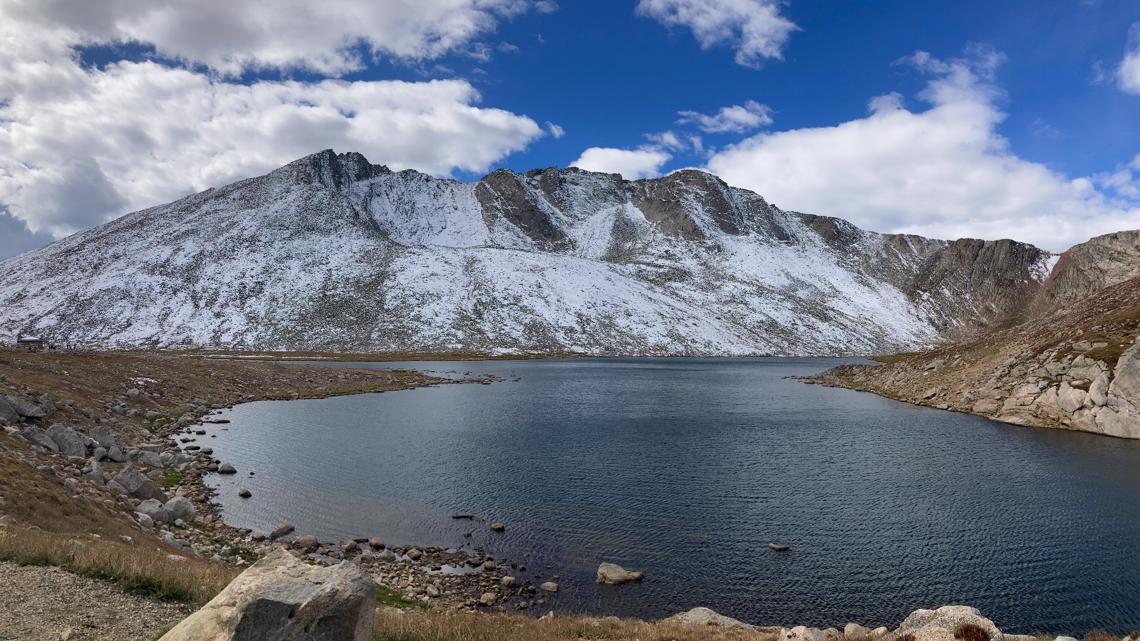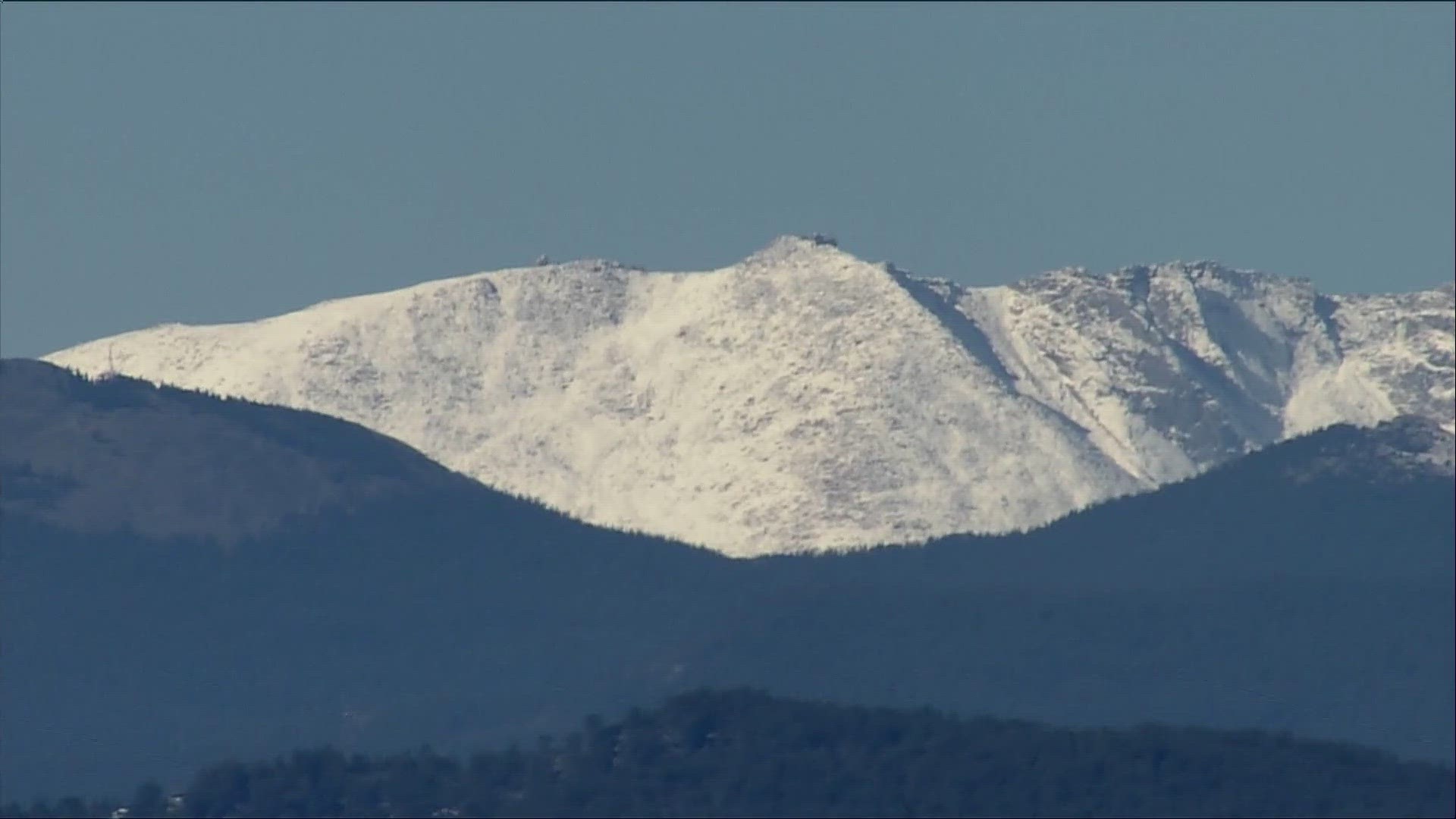CLEAR CREEK COUNTY, Colo. — A wet, late summer storm system swept through Colorado on Thursday night and through the day Friday. When the skies cleared up Saturday morning, Mt. Evans had a new name and a new coat of white paint.
What a debut for the newly named Mt. Blue Sky.


And it was more than just the usual September dusting. Judging by some eyewitness reports from park rangers and radar estimates, there was likely six inches or more on the peak, and the snow was deep enough to still be visible from the Denver metro area on Tuesday.
September dustings are usually gone in one or two days, but this snow survived a sunny weekend with temperatures reaching the 50s at 14,000 feet.
There are no official snow measurements on top of Mt. Blue Sky so there’s no way to tell exactly when the snow in the middle of September was that deep the last time or how often it happens.
It's certainly now a common sight to see the peak that white from Denver at this time of year, but it did happen another time recently. On Sept. 9, 2020, the mountain that stands most prominent over the background of the Denver skyline, also got hit with an estimated six inches of snow.
That was the same day Denver tied its second earliest snowfall on record.
Another interesting thing about the pocket of September snow in 2023, is how isolated it was. Just up the Front Range to the north – Longs Peak and Mt. Meeker barely got touched.
That's partially due to upslope winds from the northeast getting channeled into just the right spot at just the right height to coat the east facing slopes of Mt. Blue Sky.
While on the other side of the range, Mt. Bierstadt only got half as much.
And the Friday storms were also convective, which means they were much smaller and more isolated than the typical stratus layer winter storm.
SUGGESTED VIDEOS: Colorado Climate

